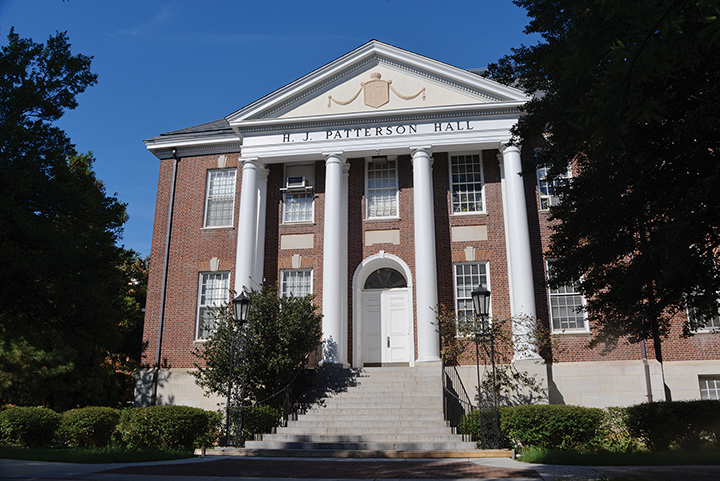When William Wright walks into the Chemistry Building every day, he wonders when he’ll see some changes. Built in 1952, this academic building was last renovated 14 years ago. Facilities Management has given it a quality index score of four, or needing “comprehensive modernization” on a scale where five calls for “demolition, replacement or downgrade use,” according to its website.
Wright, a sophomore computer engineering major, said that the age and organization of the building and lecture halls are not ideal for students.
“I feel like definitely it affects my ability to learn because if I’m uncomfortable sitting down, then I’m not entirely focused on what the professor is teaching in the lecture,” he said. “My taller friends, they have a lot of trouble with the space, so I just feel like the seating arrangements of the classrooms and the lecture halls are just terrible really.”
For freshman computer science major Emily Lempka, the old building and its lecture halls have a negative effect on her motivation.
“It’s just dimly lit, chalkboards everywhere. The color scheme just screams old,” she said. “If the room’s kind of just a downer, I wouldn’t really want to pay attention or do anything.”
Both Wright and Lempka said they would like to see the Chemistry Building renovated if possible to create a better learning environment for them.
Facilities Management ranks each building on the campus on a scale from one to five, with one indicating the best quality and five indicating essentially the building is ready for demolition. Many of the university’s STEM buildings — including the Physics Building, Glenn L. Martin Hall and the Mathematics Building — are ranked as 4s, which means substantial renovation is needed.
“It’s a rating factor to give you an indication of how good the building is and how well it meets the needs of the research, or the teaching, for that matter,” said Jack Baker, Facilities Management’s executive director of operations and maintenance. “It’s not just research related; it’s for whatever the mission of the building is.”
Baker said Facilities Management tries to match higher end-research with newer buildings, and if that isn’t possible, the university renovates a wing or section of a building to make sure the research can continue in the space provided.
“Now what the next priority will probably be is that we will probably tear down Wing 1 of Chemistry, and build a new wing, because the old wing would just require too much to put in modern chemistry labs,” he said.
As construction projects of this scale continue to take place, Baker emphasized the impracticality of renovating an entire science building like the Chemistry Building. The biggest challenge would be relocating the current departments to another building that is vacant during the demolition and construction process; an empty building like that just doesn’t exist on this campus, Baker said.
“Normally [tearing down a building] means you build something new, so a project like that would take three to four years, and if we were to replace the entire Chemistry Building, you’re talking several hundred million dollars,” he said.
Jeffrey W. Herrmann, a mechanical engineering professor, believes a total building demolition might not be necessary. He teaches class in the Physics Building twice a week, and he said the room he uses is “perfectly adequate” overall for what he does.
“It’s a little bit old-fashioned in some ways, but it’s sufficient so that we can do different types of activities in class, and students can learn from each other as well as from me,” he said.



